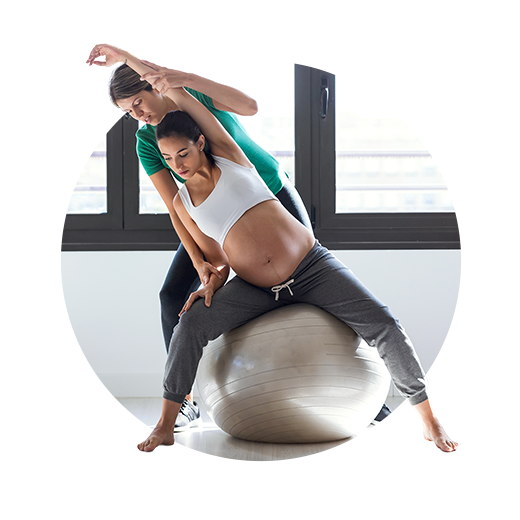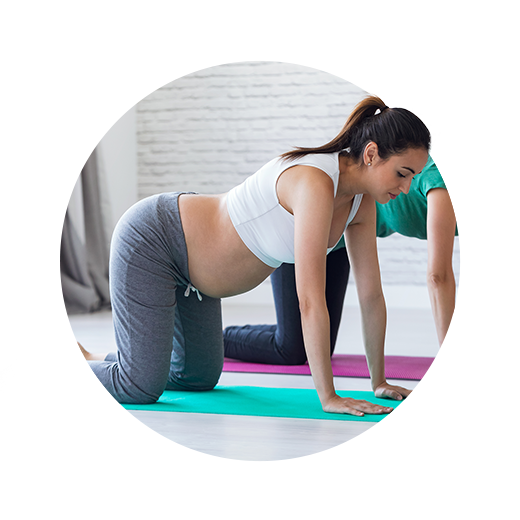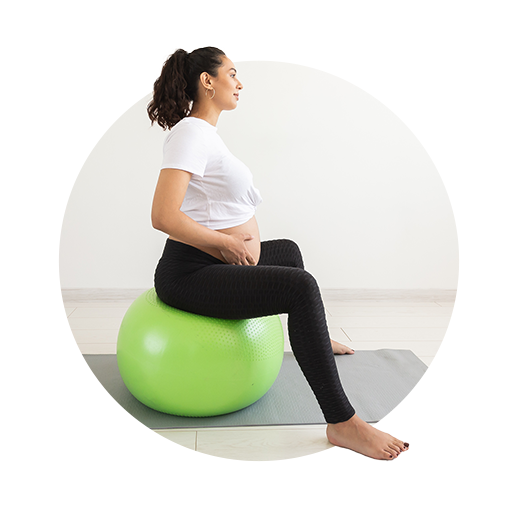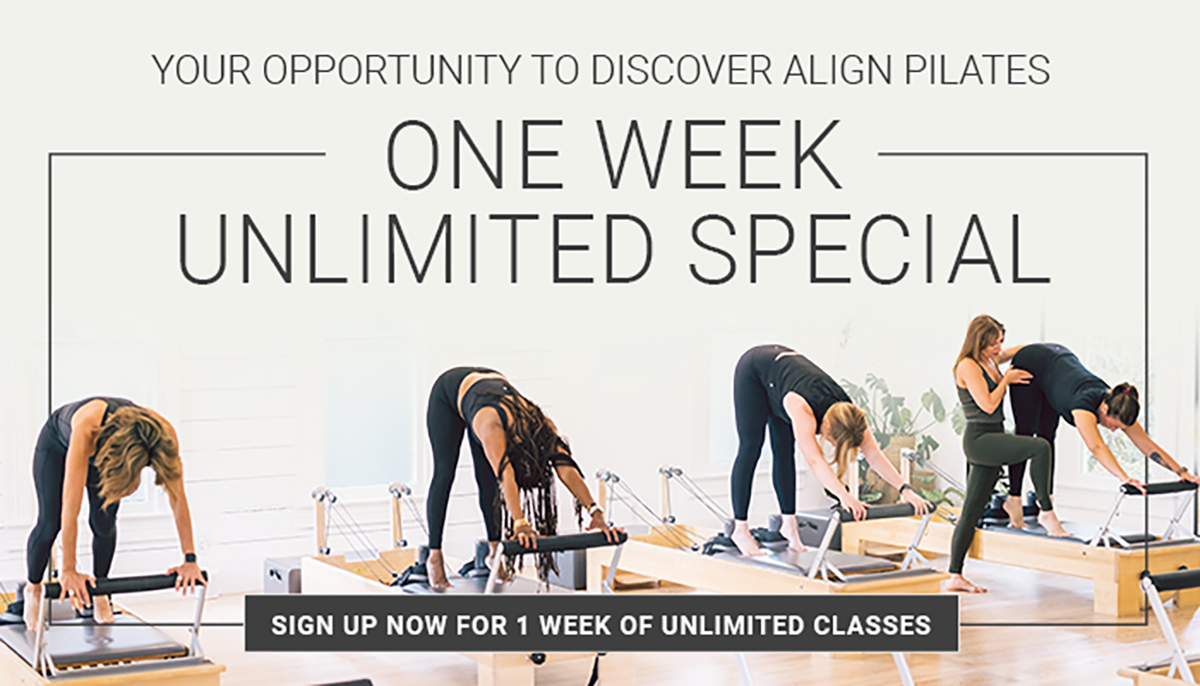Prenatal Pilates: The Benefits of Pilates During Pregnancy, Birth and Beyond
Pregnancy puts you on high alert. Suddenly, you begin to question everything you do from how you sleep to what you eat to how you move your body. At ALIGN, pregnant and postpartum women walk through our doors every day. A baby on the way doesn’t stop our clients from coming in because they know that practicing Pilates with us is safe throughout their entire pregnancy.
Not all exercise is safe during pregnancy, but Pilates is at the top of the safety list because it’s a low-impact exercise that can be easily modified during every trimester. That being said, if you’ve never done Pilates before, you will want to check with your OB to get the all-clear for practicing it for the first time while pregnant. Practicing at a studio with instructors who are trained in prenatal Pilates or doing a few private sessions will ensure you’re using your body correctly and safely while pregnant and reaping all the benefits Pilates has to offer during pregnancy, birth, and post-baby.
The Benefits of Prenatal Pilates

In addition to all of the regular physical and mental benefits of Pilates, Pilates for pregnant women offers specific benefits related to the core and pelvic floor. The way Pilates utilizes movement with deep breathing strengthens the deep core muscles, specifically the transverse abdominals, as well as the pelvic floor. Our core muscles stretch during pregnancy and the pelvic floor is put under a lot of pressure. Keeping these muscles strong is vital for a healthy pregnancy and delivery.
“As the body weakens and destabilizes during pregnancy, regular Pilates can help keep it balanced, strong, and mobile so that you continue to feel good for the entire nine months.”
Brooke Bowersock
Balanced Body Pilates Principal Educator
According to Pilates and pelvic floor expert Nikki Bergen, keeping your core and pelvic floor strong during pregnancy can:
According to this study, Pilates can also provide benefits during every stage of labor. As the study says, “Pilates exercise during pregnancy significantly reduces the labor pain intensity, length of the active phase and second stage of labor and increases maternal satisfaction of the labor process.”
In addition, Pilates may help keep the ever-changing pregnant body more stable and balanced. As this Pilates instructor explains, “… the hormone relaxin helps the body expand and prepare for delivery by loosening up the ligaments, but this also leads to joint instability (especially the SI joint connecting the pelvis to the spine). A strong connection to the core is key to managing these changes pain-free.”
As the body weakens and destabilizes during pregnancy, regular Pilates can help keep it balanced, strong, and mobile so that you continue to feel good for the entire nine months.

Pilates during the first, second, and third trimesters
Online Pilates platform Pilates Anytime explains that your Pilates practice will look different during each trimester. As the body changes and your baby grows, more modifications are needed.
During your first trimester, you can continue to exercise as you normally would. Modifications aren’t necessary at this stage, but you will need to be mindful of your energy level. The first trimester brings with it fatigue and nausea. Sometimes Pilates is exactly what you need on those days. The breathing techniques and movements during class oxygenate the body which can energize you and help relieve nausea. But sometimes during the icky days of the first trimester, rest is what’s called for. It’s ok to skip class when needed. What’s most important during this time is learning to get in tune with your body, listen to it and respond accordingly.
Pilates Anytime also points out that the first trimester — or any time during pregnancy — is not the time to advance your Pilates. Instead, focus on what you were already doing, or if you’re new to Pilates, focus on learning the core moves properly with deep breathing and core engagement rather than trying the more challenging classes.
By the second trimester you are likely starting to “show”—your belly is rounding as the baby grows. You can—and should!—continue to do Pilates in the second trimester, but this is a good time to reassess how you do Pilates. Movements like the Hundred or Series of Five should be avoided since they require crunching. Crunching can increase diastasis recti (a separation of the abdominal muscles), which can cause issues during pregnancy and after birth. You may also want to avoid doing movements in a supine position (on your back) since that can be uncomfortable for some pregnant women and cause dizziness. Movement done in the prone position (on your stomach) like the Swan or Single-leg Kicks may also not feel comfortable since your belly is growing.
You may be wondering, If I can’t crunch, lie on my back or lie on my stomach, how can I do Pilates?
This is where a knowledgeable instructor comes in. There are pregnancy-safe modifications for every move we do in Pilates. An instructor can guide you through these modifications to make sure you stay safe while building strength. If you typically do at-home Pilates, this would be a good time to explore studios in your area. Call ahead and ask if the instructors are trained in prenatal Pilates so you know you’ll be getting proper coaching.
If you want to continue with your at-home practice, an online platform like Pilates Anytime offers a series of classes for every trimester.
Your belly is growing, your energy is waning, and your joints are hurting. In some ways, the third trimester can feel like a return to the first, only now you’re trying to navigate life with a giant belly. You may be tempted to skip exercise altogether during the third trimester but try to keep moving consistently. Movement will make you feel better, give you energy and help with those late-pregnancy aches and pains. Pilates is especially crucial during this time since it will not only help you feel and move better, but it will help prepare you for birth by building the strength needed for pushing and breathing through contractions.
This is a great time to try Reformer classes if you haven’t already because you can easily make modifications while continuing to maintain and build strength using the resistance springs. Pilates Anytime points out that you can use props like the Reformer Box, Arc or Wedge on the Reformer to help you modify since you will still be avoiding prone, supine and crunching motions as well as standard planks. (Modified side planks are usually still safe to do in the third trimester.)
Pilates Post-baby

The two areas of the body most affected by pregnancy are the core and pelvic floor. After birth, your core and pelvic floor will be weak and in need of strengthening. After getting the all-clear from your doctor to resume exercise, which is often six weeks post-birth but varies based on what type of labor you had, you can go back to your regular Pilates routine.
You will need to make modifications in a similar way you did during pregnancy. While supine and prone positions may feel more comfortable, your core will be considerably weaker, and you won’t be able to do what you did pre-baby right away. It will take time to rebuild. This is why it’s important to go to a studio with instructors trained in both prenatal and postnatal Pilates. They can instruct you on what’s safe and how your body should be feeling post-baby.
If you’re accustomed to challenging Reformer classes, it may surprise you how much you need to slow down an modify before getting back to the strength you had before. A knowledgeable instructor can help pace you, so you don’t push yourself too hard, and you’re able to safely return to your pre-baby strength without injury.
Any movement pre- and postpartum is incredibly beneficial, but Pilates’ focus on the core and pelvic floor makes it one of the best choices when it comes to exercising while pregnant and after having a baby. Not only will it strengthen the parts of your body that tend to weaken when having a baby, but it will help you reconnect with your body—a body that can feel foreign and strange after going through pregnancy, labor and birth. Pilates will help you appreciate your body for what it’s been through and understand how childbirth and motherhood haven’t made you weaker but, rather, stronger than ever.
ALIGN Pilates Studios West
ALIGN Pilates Studios East
ALIGN

